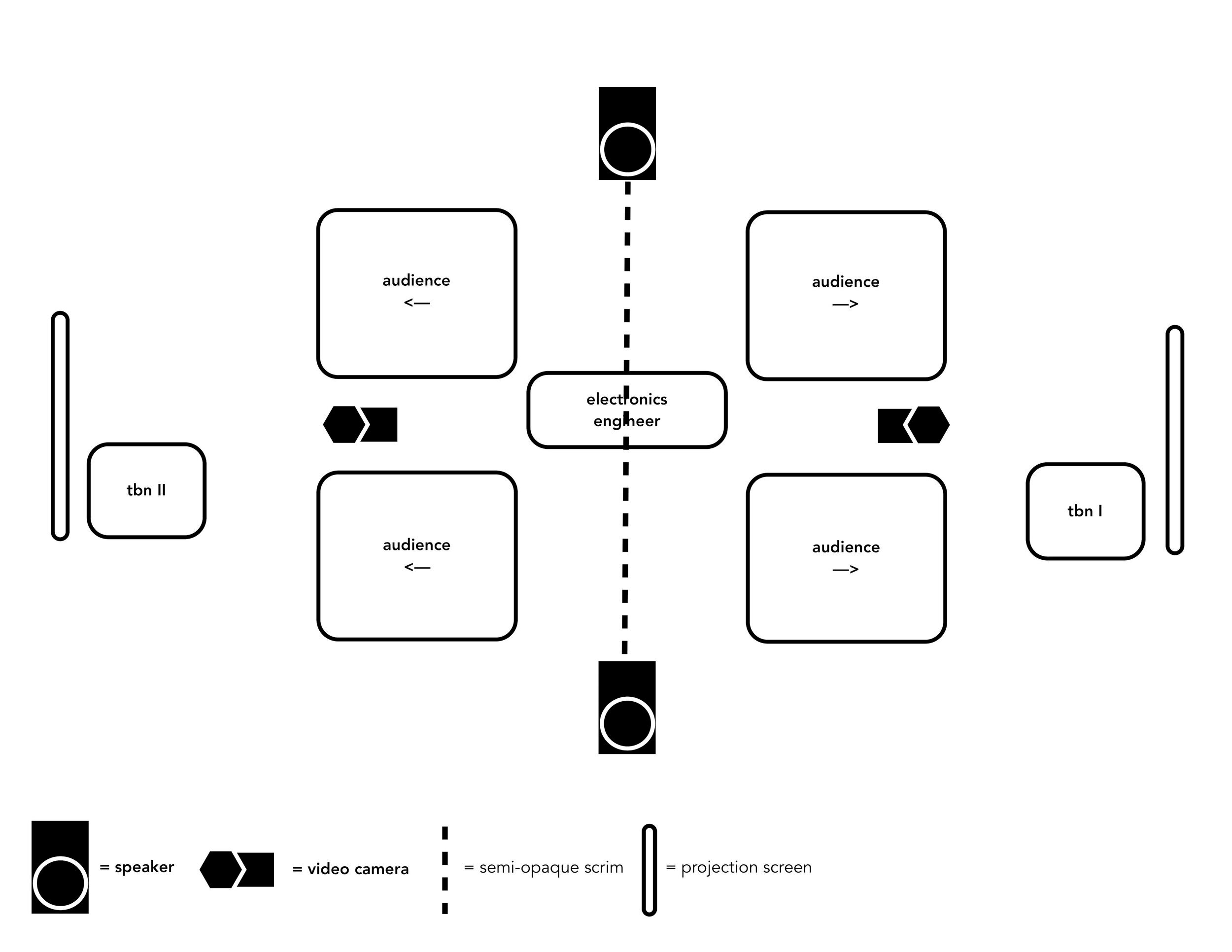Recording by Rage Thormbones, with additional trombone recordings by Riley Leitch, and Baldwin Giang, electronics.
NOTES:
In antiPHONY the audience is divided into two halves by a scrim betwen them, with each half having its back turned to the scrim. Each of the two trombonists perform facing one of the two halves of the audience, meaning that one trombonist is always obscured from a respective half of the audience. In this staging, no person is able to apprehend all the elements of the piece at one time; instead, antiPHONY emphasizes the particularity of each audience member's perspective.
Both the video and music mediate the audience's understanding of what is happening on the side they cannot directly see. The music recontextualizes familiar antiphonal tropes in this spatialized multimedia environment, producing moments that range from the humorous to unsettling. The video projections take a live video feed of one trombonist and project that feed onto the other trombonist, acting as both world model and filter. The video leans into the glitches and artifacts that are native to the telematic medium, and this glitch aesthetic has musical as well as dramaturgical repercussions through the course of the piece. As a result, each half of the audience will walk away with a different understanding of the factual events of the piece, producing a tense relationship to the truth. In the era of alternative facts and social media echo chambers, antiPHONY offers an opportunity to break from the subjective introspection that is paradigmatic of the concert hall experience and ask: "what is my neighbor hearing?"
STAGE DIAGRAM:
TECHNICAL NOTES:
antiPHONY can be performed either with a click track or without. The video component consists of live video feeds, live video processing, and fixed pre-recorded video clips. The audio component consists of fixed electronics diffused by a stereo pair of monitors placed as in the diagram above. In performances with a click-track, the video and audio cues are fully automated. In performances without a click-track, the audio and video cues can be cued live by an electronics technician on a usb-midi keyboard as indicated in the score. Please contact the composer to receive the Max/JItter patch and instructions on how to record the pre-recorded video segments.
This piece requires a laptop running Max MSP/Jitter, two video cameras, two tripods, two HDMI input to USB output adapters, two projectors, two large projection screens, a pair of stereo monitors, and optionally a usb-midi keyboard.
